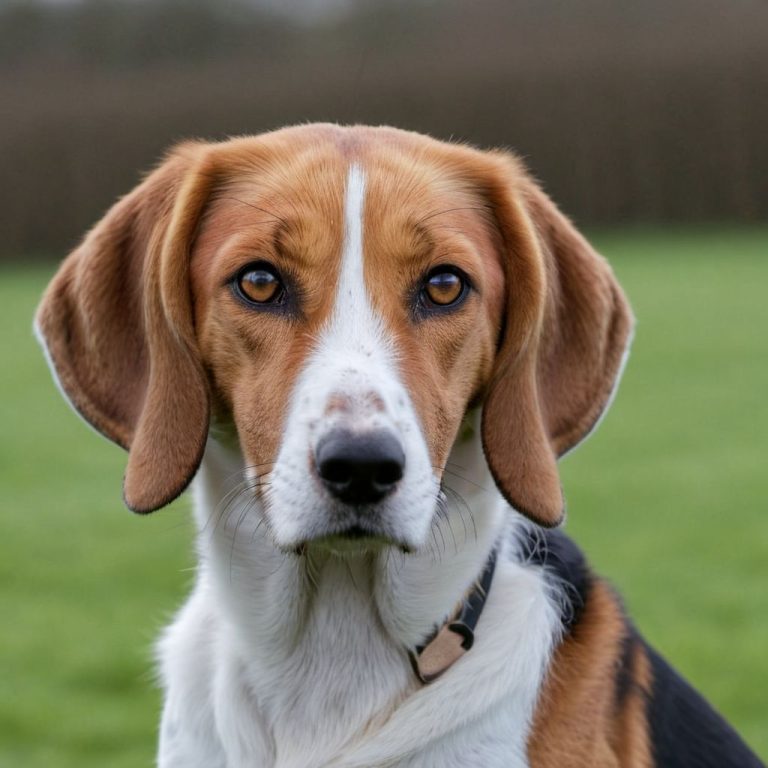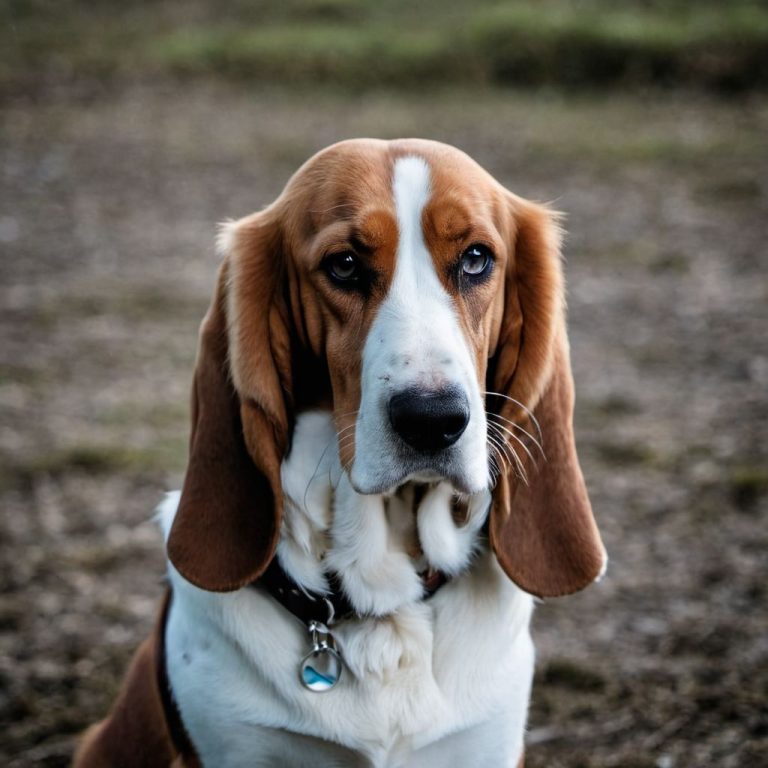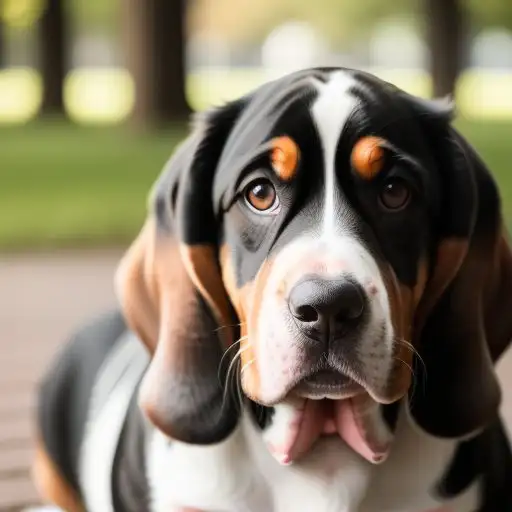GRIFFON NIVERNAIS: Noble Hunting Dog
Discover the Griffon Nivernais, a versatile scent hound known for its keen hunting instincts and distinctive shaggy coat.

The Griffon Nivernais is a breed of scent hound originating from France, specifically the Nivernais region. It is known for its keen sense of smell and its ability to track game, particularly large game such as deer and wild boar.
It has a strong, muscular build and is bred for endurance and stamina, making it well-suited for hunting in rough terrain.
Learn about its history, temperament, and suitability as both a hunting companion and a family pet.
History
The Griffon Nivernais is a breed with a rich history dating back to medieval France. It originated in the Nivernais region, known for its rugged terrain and dense forests, where it was primarily bred for hunting large game such as deer and wild boar.
The breed’s development likely involved crosses between various local scent hounds and other breeds, resulting in the distinctive Griffon Nivernais we know today.
Throughout its history, this breed remained prized for its excellent sense of smell, endurance, and ability to work in harsh conditions. It was traditionally used by French hunters in packs, with each dog contributing to tracking and cornering game.
Over time, the breed’s popularity spread beyond hunting circles, and it became appreciated as a loyal and affectionate companion as well.
Today, the Griffon Nivernais continues to excel in both hunting and as a family pet, maintaining its status as a versatile and valued breed.
Personality
This scent hound is known for its friendly and sociable personality. It tends to be loyal and affectionate towards its family members, making it a great companion pet. Despite its hunting background, it typically gets along well with children and other pets when properly socialized.
This breed is intelligent and curious, often displaying a lively and energetic demeanor. However, it may also have an independent streak, so consistent training and firm leadership are important for managing its behavior.

Physical Characteristics
Height
- Male 22-24 inches
- Female 20-22 inches
Weight
- Male 44-55 pounds
- Female 40-50 pounds
Coat
He has a dense and shaggy coat.
Color
The common colors are:
– White
– Orange
– Fawn
Eyes
This dog has dark brown eyes.
Ears
This hunting dog is characterized by long, pendulous ears that hang close to the head.
Tail
It has a medium-length tail that is carried with a slight curve upwards when alert.
Life Span
The average life is around 10-14 years.
Temperament
This scent dog is known for its loyal, affectionate nature and energetic demeanor. It’s typically friendly and sociable with its family, including children and other pets when properly socialized. This breed is intelligent and curious, with a lively disposition suited for an active lifestyle.
While generally well-mannered, it may have an independent streak, so consistent training and firm leadership are important. Overall, he makes a loving and spirited companion for those who can provide it with plenty of attention, exercise, and mental stimulation.
Grooming
These dogs have a dense, shaggy coat that requires regular grooming to keep it in good condition. Brushing their coat several times a week helps to prevent matting and removes loose hair.
Additionally, occasional baths can help keep their coat clean and healthy. Paying attention to their ears is important, as their long, pendulous ears can trap dirt and moisture, leading to potential ear infections.
Regular ear cleaning and inspection are recommended. Finally, maintaining their nails, dental hygiene, and regular check-ups with a veterinarian are essential parts of their grooming routine.

Training
Training this hound requires consistency, patience, and positive reinforcement methods. Start with basic obedience training, such as sit, stay, and come, using rewards like treats or praise to motivate them.
Socialization is also crucial, especially during puppyhood, to ensure they are comfortable around people, other animals, and various environments. Expose them to different situations, noises, and experiences to build their confidence and prevent fearfulness or aggression.
Given their hunting background, they may have a strong prey drive, so leash training and reliable recall are essential for off-leash activities. Engage them in mentally stimulating activities like scent work or puzzle toys to keep their minds sharp and prevent boredom.
Exercise
These hunting dogs require moderate to high levels of exercise to stay healthy and happy. Aim for at least 60 minutes of physical activity per day, which can include brisk walks, jogging, hiking, or playtime in a securely fenced yard.
Additionally, mental stimulation through activities like puzzle toys, scent work, or obedience training is important to keep their minds engaged. Regular exercise helps prevent boredom, reduces the risk of behavioral issues, and promotes overall well-being.
Nutrition
Provide your pet with a balanced diet that meets their nutritional needs based on factors such as age, weight, activity level, and health status. Choose high-quality commercial dog food formulated for medium to large breeds, or consult with your veterinarian for recommendations on homemade or raw diets.
Ensure their food provides essential nutrients such as protein, fats, carbohydrates, vitamins, and minerals. Monitor their weight and adjust their portions accordingly to maintain a healthy body condition. Always provide fresh water and avoid feeding them table scraps or foods that may be harmful to dogs, such as chocolate, grapes, or onions.
Health Concerns
These dogs are generally healthy, but like all breeds, they may be prone to certain health issues. Some potential health concerns to be aware of include:
Hip Dysplasia
A condition where the hip joint doesn’t develop properly, leading to arthritis and mobility issues.
Elbow Dysplasia
Similar to hip dysplasia, this condition affects the elbow joint and can cause lameness and pain.
Ear Infections
Due to their long, pendulous ears, they may be prone to ear infections if not kept clean and dry.
Bloat
Also known as gastric dilation volvulus (GDV), this is a serious condition where the stomach fills with gas and twists, requiring immediate veterinary attention.
Eye Issues
Some Griffon Nivernais may be prone to eye conditions such as cataracts or progressive retinal atrophy (PRA).
Bottom Line
The Griffon Nivernais is a loyal, affectionate breed known for its friendly disposition and energetic nature. With proper training, socialization, grooming, and healthcare, they make excellent companions for active families who can provide them with the attention and exercise they need.
FAQs (Frequently Asked Questions)
Q. Are Griffon Nivernais good with children?
Yes, when properly socialized, Griffon Nivernais dogs are typically good with children and make excellent family pets.
Q. Are they good watchdogs?
These dogs may alert their owners to strangers approaching, but they are typically friendly and not aggressive watchdogs.
Q. Do they shed a lot?
These dogs do shed, but regular grooming can help minimize shedding and keep their coat in good condition.
Q. Are these scent hounds good for apartment living?
These scent hounds are active and require plenty of exercise, so they are better suited to homes with a fenced yard where they can run and play.
Q. Do Griffon Nivernais get along with other pets?
With proper socialization, Griffon Nivernais dogs can get along well with other pets, but their hunting instincts may lead them to chase smaller animals.
Q. Are Griffon Nivernais prone to separation anxiety?
Griffon Nivernais dogs may develop separation anxiety if left alone for long periods, so it’s important to provide them with companionship and mental stimulation.
Q. Are Griffon Nivernais good for first-time dog owners?
Griffon Nivernais dogs can be suitable for first-time owners who are committed to providing them with proper training, socialization, and exercise.
Q. Do Griffon Nivernais have a high prey drive?
Yes, Griffon Nivernais dogs may have a strong prey drive due to their hunting instincts, so they should be supervised around smaller animals.
Q. Are Griffon Nivernais prone to obesity?
Like any dog, Griffon Nivernais dogs can become overweight if not given enough exercise and fed a balanced diet. Monitoring their weight and diet is important for their health.
Q. Do Griffon Nivernais drool a lot?
Griffon Nivernais dogs may drool occasionally, but they are not known to be excessive droolers compared to some other breeds.







Salutations! canine4u.com
Did you know that it is possible to send business offer totally legitimately? We make available a new legitimate method of sending business proposals through feedback forms.
Not thought of as spam, messages sent through Feedback Forms are considered important.
Take advantage of our service for free!
We can transmit up to 50,000 messages on your behalf.
The cost of sending one million messages is $59.
This message was automatically generated.
We only use chat for communication.
Contact us.
Telegram – https://t.me/FeedbackFormEU
Skype live:contactform_18